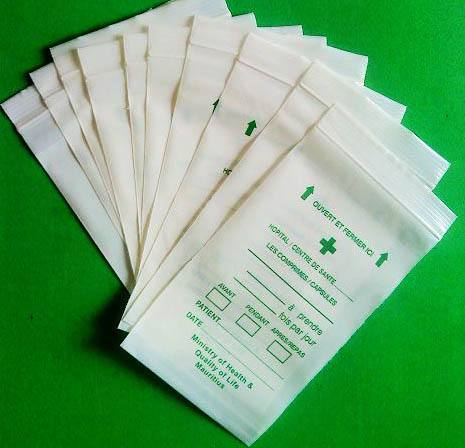Source: Linktesting Instruments Co., Ltd
The heat seal strength, refers to the strength of the seal within the flexible barrier materials and can be used to determine consistency within the seal, as well as evaluation of the opening force of the package system. Usually the heat seal strength depends on those heat seal parameters including sealing temperature, sealing pressure and dwell time.
Determination of suitable sealing parameters is significant to the performance and quality of the package. To be specific, if the sealing parameters are too low, due to the insufficient seal strength, the sealing layer may not be able to combine together tightly and as a result, the sealing edges may break or leak. On the other hand, if the sealing parameters are too high, the sealing area may shrink and as a result, the package may break from the root. Therefore, it is quite important for the manufacturers of flexible plastic medical packaging to control the seal strength by selecting suitable sealing parameters.
This article provides a simplified method for determination of heat sealing parameters of flexible plastic medical packaging with Linktesting’s LTH-03 Heat Seal Tester and LTS-05 Auto Tensile Tester.
LTH-03 Heat Seal Tester conforms to ASTM F2029: Standard Practices for Making Heatseals for Determination of Heatsealability of Flexible Webs as Measured by Seal Strength.

Figure 1. Flexible Plastic Medical Packaging Film
Figure 2. Tensile Tester LTS-05
Figure 3. Heat Seal Tester LTH-03
The tests shall be performed according to the following procedures.
(1) Cut 6 pieces of specimens from the provided samples. The size of the specimen shall be 30cm by 15cm.
(2) Switch on LTH-03 Heat Seal Tester. Set sealing pressure, dwell time and sealing temperature. The temperature of lower sealing jaw can be set at one fixed temperature or the same as the room temperature, while the temperature of upper sealing jaws can be set as required.
(3) When the preset sealing temperatures are reached, stack 2 pieces of specimens together (sealing surface to sealing surface). Then insert the specimens into between the upper and lower sealing jaws along the length direction to start heat sealing.
(4) Seal other specimens according to the procedures mentioned in step 2 and step 3.
(5) Cut one section (15mm in width) of specimen from the sealed specimens, 2 pieces for each sealing temperature.
(6) Then unfold the specimens prepared in step 5. The length of the unfolded area should be not less than 10cm.
(7) Switch on LTS-05 Auto Tensile Tester and set specimen width, test speed and other test parameters.
(8) Clamp one of the specimens prepared in step 6 between the upper and lower sample grips. Click Test to start the test.
(9) The test result will be displayed automatically after the test.
(10) Test other specimens prepared in step 6 according to the procedures mentioned in step 8.
For more details about Linktesting’s LTH-03 Heat Seal Tester and LTS-05 Auto Tensile Tester, please visit www.Linktesting.com
About Linktesting Instruments Co., Ltd:
Linktesting Instruments Co., Ltd is one leading supplier of packaging testing instruments located in Shandong China.
WWW.LINKTESTING.ORG